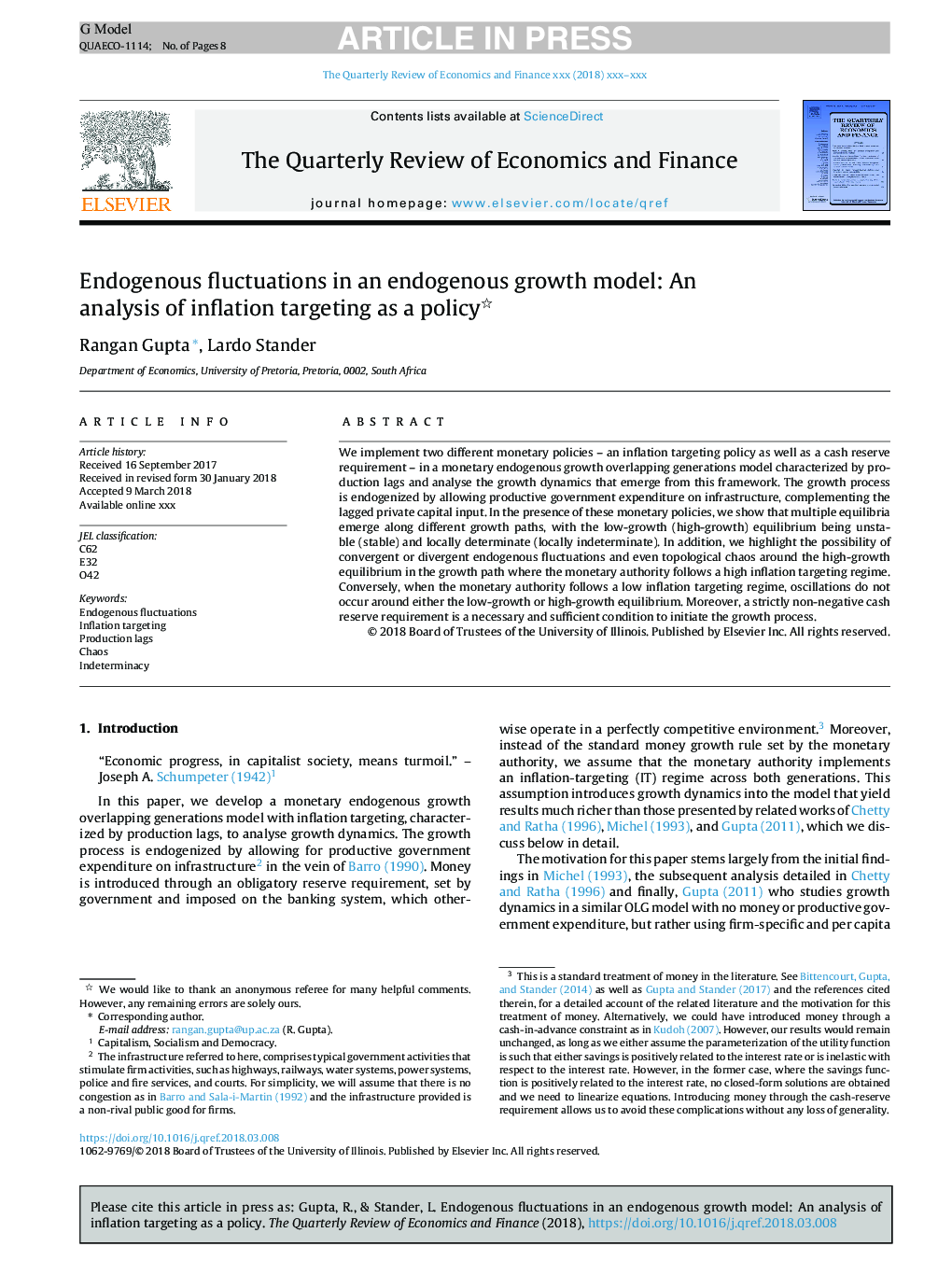| Article ID | Journal | Published Year | Pages | File Type |
|---|---|---|---|---|
| 7383196 | The Quarterly Review of Economics and Finance | 2018 | 8 Pages |
Abstract
We implement two different monetary policies - an inflation targeting policy as well as a cash reserve requirement - in a monetary endogenous growth overlapping generations model characterized by production lags and analyse the growth dynamics that emerge from this framework. The growth process is endogenized by allowing productive government expenditure on infrastructure, complementing the lagged private capital input. In the presence of these monetary policies, we show that multiple equilibria emerge along different growth paths, with the low-growth (high-growth) equilibrium being unstable (stable) and locally determinate (locally indeterminate). In addition, we highlight the possibility of convergent or divergent endogenous fluctuations and even topological chaos around the high-growth equilibrium in the growth path where the monetary authority follows a high inflation targeting regime. Conversely, when the monetary authority follows a low inflation targeting regime, oscillations do not occur around either the low-growth or high-growth equilibrium. Moreover, a strictly non-negative cash reserve requirement is a necessary and sufficient condition to initiate the growth process.
Related Topics
Social Sciences and Humanities
Economics, Econometrics and Finance
Economics and Econometrics
Authors
Rangan Gupta, Lardo Stander,
